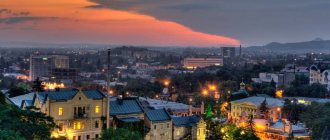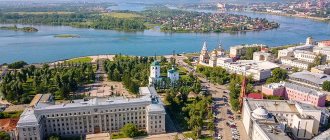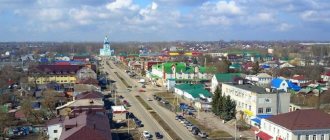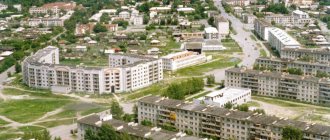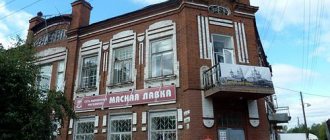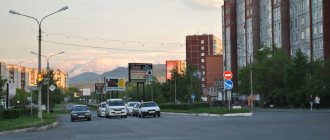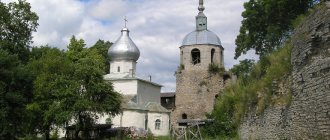City in Amur Oblast, Russia
| Tynda Tynda | |
| Town[1] | |
| Residential buildings in Tynda | |
| Flag Coat of arms | |
| Location of Tynda | |
| Tynda Location of Tynda Show map of Russia Tynda Tynda (Amur region) Show map of the Amur region | |
| Coordinates: 55°10′N 124°43'E / 55.167°N Latitude 124.717°E / 55.167; 124.717Coordinates: 55°10′N 124°43'E / 55.167°N Latitude 124.717°E / 55.167; 124.717 | |
| A country | Russia |
| Federal subject | Amur region[1] |
| Based | 1917 |
| City status from | November 14, 1975 |
| Government | |
| • Head | Mark Schultz |
| Square [2] | |
| • General | 134 km2 (48 sq mi) |
| Height | 520 m (1,710 ft) |
| population (2010 Census)[3] | |
| • General | 36,275 |
| • Evaluate (2018)[4] | 33,061 (-8.9%) |
| • Density | 290/km2 (760/sq mi) |
| Administrative status | |
| • Subordinate | Tynda urban district[1] |
| • Capital from | Tyndinsky urban district[1], Tyndinsky district[1][5] |
| Municipal status | |
| • Urban district | Tynda urban district[6] |
| • Capital from | Tyndinsky urban district[6], Tyndinsky district[5] |
| Timezone | UTC + 9 (MSK + 6 [7]) |
| Postal code(s)[8] | 676280–676290 |
| Dial code(s) | +7 41656 |
| OKTMO I WOULD | 10732000001 |
| Web site | network.archive.org/ Internet/20080803192141/ https:// city.tynda.RU/ |
Tynda
(Russian: Tynda) is a town in Amur Oblast, Russia, located 568 km (353 mi) northwest of Blagoveshchensk. This is an important railway junction, unofficially called the capital Baikal-Amur Mainline. Its population has declined sharply in recent years: 36,275 (2010 Census);[3]40,094 (2002 Census);[9]61,996 (1989 Census).[10]
Story
Settlement of Shkaruba
was founded in 1917 on the current site of Tynda as a halt and winter camp on the route from the Amur to the newly discovered gold mines on the Timpton River, a tributary of the Aldan.[12]
In 1928, in connection with the construction of a highway to the city of Yakutsk, it was renamed Tyndinsky
(Tyndinsky).
In 1932, plans for what would eventually become the Baikal-Amur Mainline (BAM) named Tynda as a possible future junction station. 180 kilometers (110 mi) railway line connecting Tynda to BAM station (known as Bamovskaya
) near Skovorodino on the Trans-Siberian Railway was built between 1933 and 1937, but was then dismantled during World War II and the rails were reused for other projects closer to the front. In 1941, Tynda received the status of an urban settlement.[2]
Revival of the construction of BAM as an All-Union Komsomol project
In the early 1970s, the railway line between Bamovskaya and Tyndinsky was reconstructed, and then the BAM was built to the east and west of the city.
The village and its junction station were transferred under the patronage of Komsomol detachments from Moscow, which corresponds to its status as the symbolic capital of the BAM. As the population grew due to construction, the village received city status on November 14, 1975 and received its current name.[ citation needed
]
The Amur Yakut Mainline (YAM) also began construction from Tynda, with the section to Neryungri completed in 1977. AYaM currently serves to Tommot in the Republic of Sakha, with completion to Yakutsk expected in 2013.
BAM was completely opened for use in 1989, with the exception of the Severomuysky tunnel. After the completion of the construction of the BAM, Tynda fell into disrepair, as the load on the highway turned out to be low. Tynda's population has declined by more than 30% since the collapse of the Soviet Union, from 61,996 residents recorded in the 1989 Soviet census to an estimated population of about 38,000 in 2008.[13]
Bear region
A settlement existed here since the 20s of the 20th century: first just as a winter hut, where gold miners and hunters lived, then as a full-fledged village, called Tyndinsky. The name comes from the Evenks, the indigenous inhabitants of the north of the region.
The project for the construction of the Baikal-Amur Mainline appeared in the 1930s of the last century - the country’s leadership decided to develop the untrodden region and build a railway between the village of Urusha in the Trans-Baikal Territory and the village of Perm, now Komsomolsk-on-Amur. It was assumed that construction of the road would begin in 1933 and be completed two years later, but in the end it took 49 years to complete the project.
But let's not get ahead of ourselves. All BAM plans existed on paper - where the railway was supposed to pass, the land was practically undeveloped. It was not possible to recruit free builders in sufficient numbers, and the OGPU was brought in to resolve the issue. In the north of the Amur region, the Baikal-Amur correctional camp, infamously known as BAMlag, was created. Arriving exiles were met by taiga, permafrost and 50-degree frosts - neither nature nor the Soviet government gave people any relief.
Nikolay Gusev, Yandex
However, with the outbreak of the Great Patriotic War, the construction of the highway had to be frozen. At that time, the railway tracks were laid in only two sections, from which the rails and bridge trusses were immediately removed, and all this was sent to the west of the country, to the sites of major military operations. For example, the construction of the railway from Stalingrad to Sviyazhsk, which ultimately influenced the outcome of the Battle of Stalingrad.
bredford68, Yandex, Shepelev Sergey
The BAM project froze for an indefinite period of time - after the war there was no time for it. And the construction of the Baikal-Amur Mainline was discussed again only in the mid-60s. At that time, the village of Tyndinsky was a completely peaceful and calm settlement. Yes, bearish country. Yes, it’s freezing and far from civilization. But the people here were strong, accustomed to everything, and it was not for nothing that they were exiles. And those who were not strong had to become so.
kor70wet, Yandex
At the end of the 60s, when pieces of paper with the word BAM rustled from the archives in Moscow, the village had its own music school - a sign of the coming civilization. Many of the exiles were educated and intelligent people, and the younger generation adopted from their parents the desire for spiritual development.
At first, the children studied in a small log hut, in the middle of which there was a huge stove, a real salvation. The frosts stayed at 50 degrees, and the guys who came to classes first warmed their fingers in the stove “oven”, or, as it was called then, “Kakhovka”.
Climate
Tynda has a subarctic climate (Köppen climate classification Dwc
) with severely cold, rather dry winters and warm, very rainy summers.
| Climate data for Tynda | |||||||||||||
| Month | Jan | Feb | Mar | Apr | May | Jun | Jul | Aug | Sep | October | But I | December | Year |
| Record high °C (°F) | 0.0 (32.0) | −0.5 (31.1) | 12.4 (54.3) | 25.3 (77.5) | 34.0 (93.2) | 35.2 (95.4) | 37.2 (99.0) | 34.4 (93.9) | 28.2 (82.8) | 20.2 (68.4) | 6.2 (43.2) | 0.0 (32.0) | 37.2 (99.0) |
| Average high °C (°F) | −23.0 (−9.4) | −16.0 (3.2) | −6.1 (21.0) | 4.1 (39.4) | 13.9 (57.0) | 22.1 (71.8) | 24.3 (75.7) | 21.5 (70.7) | 13.7 (56.7) | 1.4 (34.5) | −13.7 (7.3) | −23.4 (−10.1) | 1.6 (34.9) |
| Daily average °C (°F) | −29.0 (−20.2) | −24.0 (−11.2) | −14.8 (5.4) | −3.0 (26.6) | 6.6 (43.9) | 14.4 (57.9) | 17.2 (63.0) | 14.3 (57.7) | 6.7 (44.1) | −5.6 (21.9) | −20.2 (−4.4) | −28.7 (−19.7) | −5.5 (22.1) |
| Average low °C (°F) | −35.1 (−31.2) | −32.0 (−25.6) | −23.5 (−10.3) | −10.1 (13.8) | −0.7 (30.7) | 6.6 (43.9) | 10.0 (50.0) | 7.1 (44.8) | −0.4 (31.3) | −12.5 (9.5) | −26.8 (−16.2) | −34.0 (−29.2) | −12.6 (9.3) |
| Record low °C (°F) | −50.0 (−58.0) | −49.0 (−56.2) | −42.2 (−44.0) | −35.0 (−31.0) | −12.8 (9.0) | −3.9 (25.0) | −1.1 (30.0) | −6.0 (21.2) | −15.0 (5.0) | −32.5 (−26.5) | −45.0 (−49.0) | −48.9 (−56.0) | −50.0 (−58.0) |
| Average precipitation mm (inches) | 11.4 (0.45) | 11.9 (0.47) | 19.7 (0.78) | 38.3 (1.51) | 74.7 (2.94) | 125.2 (4.93) | 123.3 (4.85) | 143.4 (5.65) | 76.4 (3.01) | 42.8 (1.69) | 23.4 (0.92) | 19.5 (0.77) | 710 (27.97) |
| Average relative humidity (%) | 75.2 | 68.1 | 62.4 | 58.3 | 59.1 | 66.4 | 74.9 | 77.9 | 72.5 | 71.2 | 76.6 | 76.2 | 69.9 |
| Source: climbase.ru (1948-2011)[14] | |||||||||||||
Economics and transport
Tynda station
Tynda is the intersection point of the Baikal-Amur Mainline and the Amur Yakut Mainline railways. The city's station is one of the most important on both lines and has a large locomotive depot.
Apart from railway activity, the town's economy is heavily dependent on the timber industry, with Tyndales
The corporation is based here. The M56 motorway to Yakutsk also passes through the city.
The city is served by Tynda Airport, located 15 kilometers (9.3 mi) to the north. After being closed for several years, air traffic from Blagoveshchensk via Zeya was resumed in 2007.[15]
The city of Tynda, Amur region:
Tynda city
— the administrative center of the Tyndinsky district of the Amur region. Sometimes the city is called the “capital of BAM”. The status of a city was received in November 1975, before that - in 1907 the village of Tyndinsky. The actual number of residents is about 36 thousand people.
The city is located on the Tynda River (Amur basin), 839 km from Blagoveshchensk, about 6.7 thousand kilometers by rail and about 5.1 thousand kilometers by air. Located in the eastern part, at the confluence of the Getkana River and the Tynda River, at an altitude of more than 500 m above sea level. A large transport hub in the north-west of the Amur region, where the Taishet-Urgal and Bamovskaya-Berkakit lines intersect. Temperate geographical zone. The following trees grow in the city: willow, birch, conifers, poplar, rowan, and bird cherry. The main part of the vegetation is taiga.
Tynda is the northernmost and youngest city of the Amur region.
Education in the city of
Tynda.
After the merger of some educational institutions (Gymnasium No. 2 merged with school No. 1 and No. 5), the city was left with 4 schools and private gymnasium No. 1, which is recognized as the richest and most expensive gymnasium in the region.
The very first school No. 1, now No. 7 in Tynda, was located on the street. 2nd Pyatiletka, on this site there is now school No. 2, now st. Sports.
In Tynda there is a railway transport technical school and a branch of the Far Eastern State Transport University (FESGUPS), united in 2007 into the Baikal-Amur Institute - a branch of the State Educational Institution of Higher Professional Education "Far Eastern State Transport University" in Tynda. There are also branches of other educational institutions in the city.
Economy of the city of Tynda:
At the beginning of January 2010, Tynda was included in the list of single-industry towns in Russia
because of one city-forming enterprise - the railway.
OJSC "Bamstroymekhanizatsiya"
the largest company in the Far East specializing in the construction of railways and highways. Annual turnover is more than 10 billion rubles. The main sponsor of many projects.
LPK Tynda-les
- the largest timber industry complex in Russia.
Mostostroy - 10
is the largest enterprise specializing in the construction of railway lines and bridges.
There are many railway transport enterprises in the city:
Tynda branch of the Far Eastern Railway (planned to be disbanded on July 1, 2010 due to the transition to a non-departmental structure), locomotive and carriage depot, line enterprises.
There are permafrost and hydrometeorological stations. The Tynda geological prospecting expedition is located not far from the city.
The city's public transport is represented by buses, minibuses and taxis.
Tynda is a transport hub where the M56 Lena federal highway and the BAM and AYAM railway lines intersect. The only one in the Amur region runs to Blagoveshchensk.
Recommendations
Notes
- ^ a b c d f g gram
Law No. 127-OZ - ^ a b
People's Encyclopedia of Cities and Regions of Russia - ^ a b
Federal State Statistics Service of Russia (2011).
“All-Russian Population Census 2010. Volume 1" [All-Russian Population Census 2010, vol. 1]. All-Russian Population Census 2010 [All-Russian Population Census 2010]
(in Russian). Federal State Statistics Service. - "26. The size of the permanent population of the Russian Federation by municipalities as of January 1, 2022.” Federal State Statistics Service. Retrieved January 23, 2022.
- ^ a b c
Law No. 32-OZ - ^ a b c
Law No. 414-OZ - "On the calculation of time." Official Internet portal of legal information
(in Russian). June 3, 2011. Retrieved January 19, 2022. - Post office. Information and computing center of OASU RPO. ( Post office
).
Search for postal facilities ( Search for postal facilities
) (in Russian) - Federal State Statistics Service of Russia (May 21, 2004). “The population of Russia, the constituent entities of the Russian Federation as part of federal districts, urban settlements, urban settlements, settlements, settlements of 3 thousand or more people.” [Population of Russia, its federal districts, federal subjects, districts, urban settlements, rural settlements - administrative centers, rural settlements with a population of more than 3000 people] (XLS). All-Russian Population Census of 2002 [All-Russian Population Census of 2002]
(in Russian). - “All-Union Population Census of 1989. The actual population of the union and autonomous republics, autonomous regions and districts, territories, regions, urban settlements and villages in Amurskaya Pravda,” August 25, 2007.
Sources
- Amur Regional Council of People's Deputies. Law No. 127-OZ of December 23, 2005 “On the procedure for resolving issues of the administrative-territorial structure of the Amur Region,” as amended. Law No. 272-OZ of November 11, 2013 “On amendments to the Law of the Amur Region” On the procedure for resolving issues of the administrative-territorial structure of the Amur Region “”. Came into force from the date of the first official publication, with the exception of subparagraph “b” of paragraph 2 of Article 7, which comes into force on January 1, 2006. Published: “Amurskaya Pravda”, No. 11, January 24, 2006 (Amur Regional Council of People's Deputies Law No. 127-OZ of December 23, 2005 On the procedure for resolving issues of the administrative-territorial structure of the Amur Region
As amended by Law No. 272-OZ of November 11, 2013
On amendments to the Law of the Amur Region “On the procedure for resolving issues of the administrative-territorial structure Amur Region"
. Valid from the date of the first official publication, with the exception of subparagraph “b” of paragraph 2 of Article 7, effective from January 1, 2006). - Amur Regional Council of People's Deputies. Law No. 414-OZ of January 19, 2005 “On granting the municipal formation of the city of Tynda the status of an urban district and on establishing its boundaries,” as amended. Law No. 100-OZ of December 5, 2005 “On the formation of the Belenky village council in the Tyndinsky district and amendments to the laws of the region of the administrative-territorial structure of the region.” Came into force ten days from the date of the first official publication. Published: “Amurskaya Pravda”, No. 19–20, January 26, 2005 (Amur Regional Council of People's Deputies. Law No. 414-OZ of January 19, 2005 On assigning the status of an urban district to the municipal formation of the city of Tynda and on establishing its boundaries
B edition of the Law of December 5, 2005 No. 100-OZ.
On the formation of the Belenky village council in the Tyndinsky district and on amendments to a number of regional laws on the administrative-territorial structure of the region
. Valid after ten days from the date of the first official publication.). - Amur Regional Council of People's Deputies. Law No. 32-OZ of August 3, 2005 “On establishing boundaries and granting the status of a state municipal formation of the Tyndinsky district and municipal formations within it,” as amended. Law No. 100-OZ of December 5, 2005 “On the formation of the Belenky village council in the Tyndinsky district and amendments to the laws of the region of the administrative-territorial structure of the region.” Came into force on the date of its first official publication. Published: “Amurskaya Pravda”, No. 166, August 24, 2005 (Amur Regional Council of People’s Deputies. Law No. 32-OZ of August 3, 2005 On establishing boundaries and assigning the Tyndinsky district and its constituent municipalities the status of the corresponding municipal education
As amended by Law No. 100-OZ dated December 5, 2005.
On the formation of the Belenky Village Council in the Tyndinsky District and on amendments to a number of regional laws on the administrative-territorial structure of the region
. Valid from the date of the first official publication.).
Coat of arms and flag of Tynda:
Flag of the city of Tynda.
The flag, approved on January 26, 2006, is the official symbol of the city of Tynda and is included in the State Heraldic Register of the Russian Federation with the assignment of registration number 2271.
The flag is based on the coat of arms of the city of Tynda according to the rules and relevant traditions of heraldry and reflects historical, cultural, socio-economic, national and other local traditions.
Author group:
flag idea: Konstantin Mochenov (Khimki), rationale for symbolism: Kirill Perekhodenko (Konakovo), computer design: Oksana Afanasyeva (Moscow).
Rationale for symbolism:
The flag of Tynda is based on the city's coat of arms. The city of Tynda was founded as one of the strongholds for the construction of the BAM. Today, the Amur-Yakutsk highway passes through this area, as well as a section of the Far Eastern Railway and an airport. Therefore, Tynda is a major transport hub. This is indicated by the image on the key flag. The key bit is shaped like a winged wheel, a traditional railroad emblem. The motif of the surrounding nature on the flag is emphasized by the use of green - a symbol of nature, health, vitality and white (silver) - a symbol of purity, perfection, peace and mutual understanding. Yellow color (gold) is a symbol of wealth, respect, stability, intelligence; The city's coat of arms also symbolizes the gold-bearing shelf of the Tynda River. Thus, the Tynda flag reflects the historical, natural and economic features of the city in the language of symbols and allegories.
Description:
A rectangular panel with a width to length ratio of 2:3, divided crosswise into four unequal parts (the vertical division line is spaced from the shaft by ½ of the length of the panel): two white (at the top of the shaft and below at the free edge) and two green. On top of the intersection lines is a yellow key with a ring facing up, ending at the bottom with a winged wheel.
Coat of arms of the city of Tynda.
Justification of the symbolism of the coat of arms of the city of Tynda.
The city of Tynda was founded as one of the strongholds for the construction of the BAM. Today, the Amur-Yakutsk highway passes through this area, as well as a section of the Far Eastern Railway and an airport. Therefore, Tynda is a major transport hub. This is indicated by the image of the key in the coat of arms. The key bit is shaped like a winged wheel, a traditional railroad emblem. The figure of a deer shows that the city is located in the area of historical and current Evenki reindeer herding settlements. Spruce - a symbol of eternity and longevity in the coat of arms symbolizes the nature surrounding the city - the virgin, impenetrable taiga, the ecological source of life. The motif of the surrounding nature in the coat of arms is emphasized by the use of green - a symbol of nature, health, vital energy and silver - a symbol of purity, perfection, peace and mutual understanding. The pyramid-shaped bars depicted at the base of the coat of arms allegorically show Tynda as a young, growing city. Gold is a symbol of wealth, respect, stability, intelligence; The city's coat of arms also symbolizes the gold-bearing shelf of the Tynda River. Thus, the coat of arms of Tynda reflects the historical, natural and economic features of the city in the language of symbols and allegories.
Description of the flag of the city of Tynda:
“The flag of the city of Tynda is a rectangular panel with a width to length ratio of 2:3, divided crosswise into four unequal parts: two white (at the top of the hoist and below at the free edge) and two green. In the middle of the panel there is a yellow key with a ring facing up, ending at the bottom with a winged wheel.”

